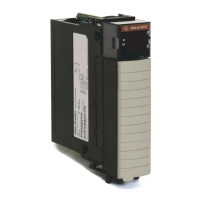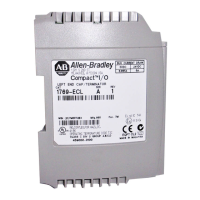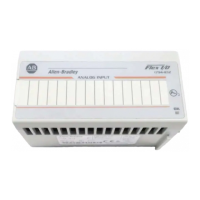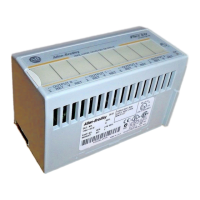Rockwell Automation Publication 1756-UM540E-EN-P - December 2017 61
Temperature-sensing Analog Modules Chapter 4
To see where to select the input range, see page 131.
Notch Filter
The Notch Filter is a built-in feature of the Analog-to-Digital convertor (ADC)
that removes line noise in your application for each channel. The removal of line
noise is also known as noise immunity.
The Notch Filter attenuates the input signal at the specified frequency. That is,
the filter reduces the amplitude of the signal with minimal signal distortion.
Choose a Notch Filter based on what noise frequencies are present in the
module's operating environment and any sampling requirements needed for
control. The default Notch Filter setting is 60 Hz.
For example, a Notch Filter is typically set to 60 Hz to filter out 60 Hz AC line
noise and its overtones. A 60 Hz Notch Filter setting attenuates frequencies of
60 Hz, 120 Hz, 180 Hz and so forth.
1756-IRT8I
and 1756-IT16
Thermocouple
mV
-100…100 mV
TC Type B
TC Type C
TC Type E
TC Type J
TC Type K
TC Type N
TC Type R
TC Type S
TC Type T
TC Type TXK/XK(L)
TC Type D
Table 11 - Module - Channel Input Ranges
Module Input Type Sensor Type Input Range

